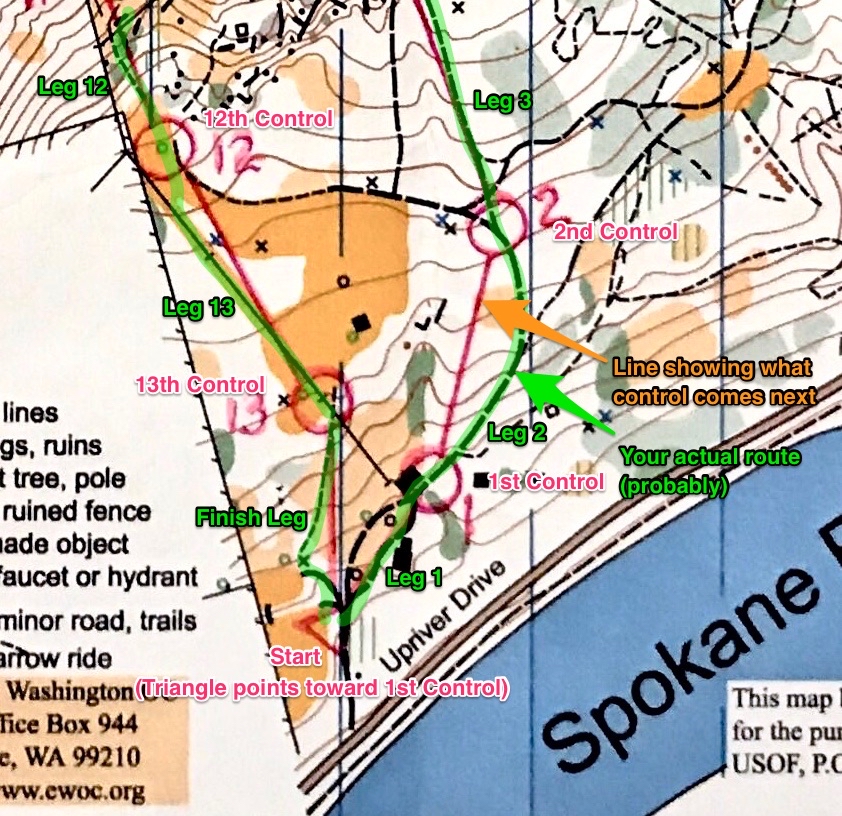Eastern Washington Orienteering Club
An Orienteering Event
What Is An Orienteering Event?

Orienteering is the sport of navigating through unfamiliar territory using a map and compass. In a classic orienteering event, a course designer marks a number of control points on the map and numbers them. Usually he or she designs several courses for one event that differ in length and navigational complexity to suit people of various ages, experience levels, and physical conditions. Participants head out from the start one at a time trying to find all of the control points on their course in order and return to the start as quickly as they can. A timekeeper will keep track of start and finish times for each person.
Bonus Details
- At some EWOC events you'll start with a plain map of the area. Once you've decided what course you're going to do you'll have to look at a master map and copy the controls with a red pen, as shown in the image above.
- Start times for competitors only need to be staggered by a minute or two to keep people from following each other to control points. You might see other participants out in the wilds but you won't usually know if they're on the same course, so it doesn't often pay to follow them.
- Orienteering isn't the same thing as a "compass course." You're encouraged to look at the map and choose the best route between control points. For instance, straight lines save distance, but staying on trails can make running and navigation easier. In a way, orienteering is like a cross-country running race, where the competitors choose their own routes.
- Our example is a "classic" point-to-point course — you're supposed to find the controls in the prescribed order. There are other types of events, like "score-o" where the challenge is to find as many controls as you can within a time limit. Point-to-point is the most basic event type and if you understand how to participate in one, the other types are easy and fun variations.
